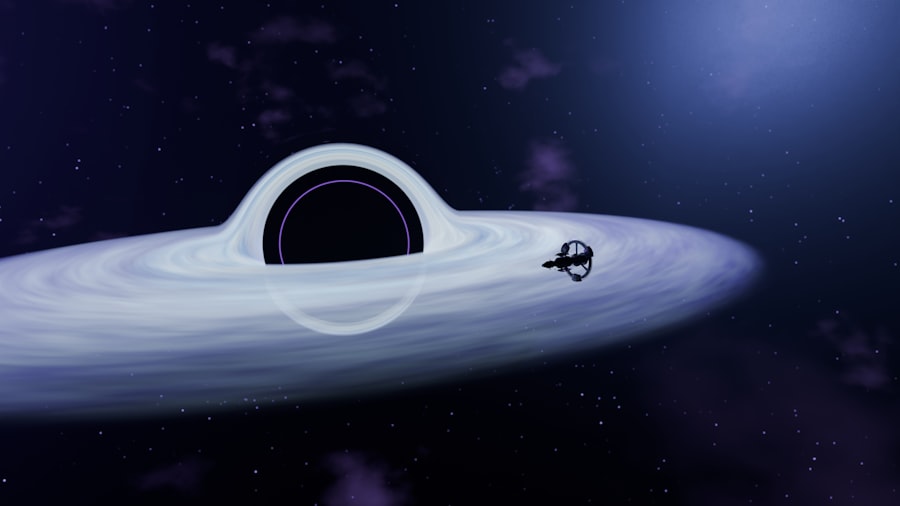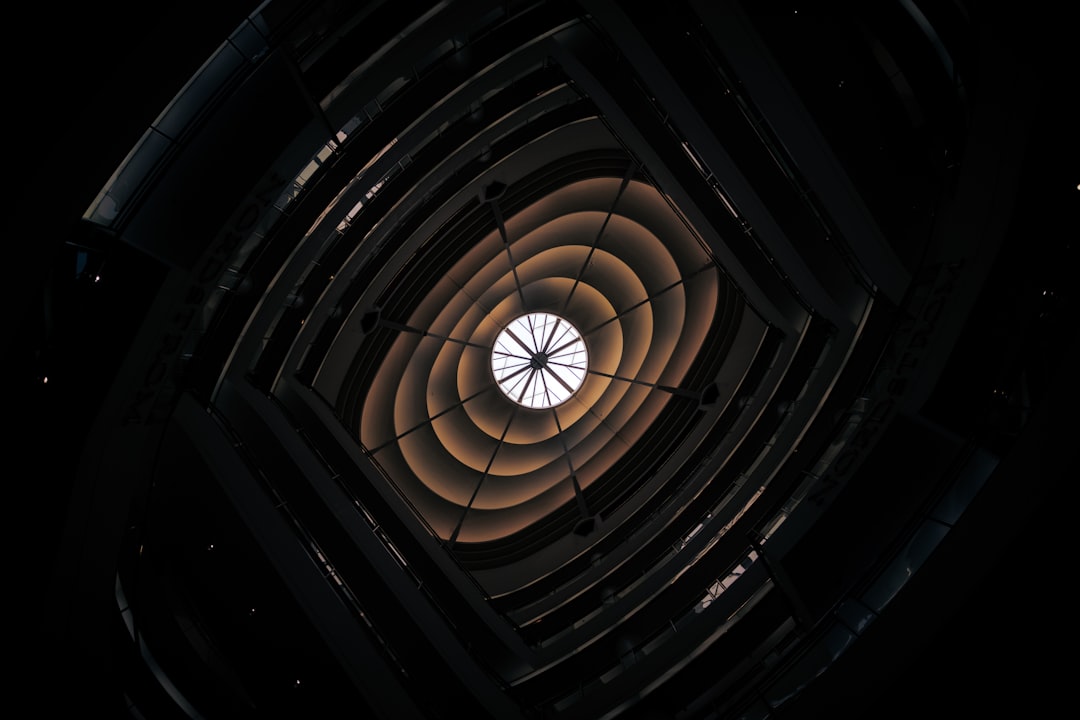As you delve into the mysteries of the universe, you may find yourself captivated by the concept of the space-time continuum. This intricate framework combines the three dimensions of space with the dimension of time, creating a four-dimensional fabric that underpins the very nature of reality. The space-time continuum is not merely an abstract idea; it is a fundamental aspect of how you perceive and interact with the universe.
It shapes your understanding of events, movements, and the passage of time itself. The notion of space-time challenges your intuitive perceptions. You might think of space and time as separate entities, but in reality, they are interwoven in a complex relationship.
This relationship is essential for understanding how gravity operates and how objects move through the cosmos. As you explore this concept further, you will uncover the profound implications it has for physics, cosmology, and even your everyday life.
Key Takeaways
- The space-time continuum is a fundamental concept in physics that combines the three dimensions of space with the dimension of time.
- Einstein’s theory of general relativity revolutionized our understanding of gravity by describing it as the curvature of space-time caused by mass and energy.
- Understanding the fabric of space-time involves visualizing it as a flexible, dynamic structure that can be warped and curved by the presence of matter and energy.
- Gravitational time dilation occurs when time passes at different rates in regions of different gravitational potential, as predicted by general relativity.
- The curvature of space-time is responsible for the gravitational attraction between objects and the motion of planets and stars in the universe.
Einstein’s Theory of General Relativity
At the heart of modern physics lies Albert Einstein’s groundbreaking theory of general relativity, which revolutionized your understanding of gravity and its effects on the space-time continuum. Introduced in 1915, this theory posits that gravity is not merely a force acting at a distance but rather a curvature of space-time caused by mass. When you think about gravity in this way, it becomes clear that massive objects like planets and stars warp the fabric of space-time around them, influencing the motion of other objects.
Einstein’s theory fundamentally altered your perception of how the universe operates. Before general relativity, gravity was understood through Newtonian mechanics, which described it as a force between two masses. However, Einstein’s insights revealed that this force is a manifestation of the geometry of space-time itself.
As you consider this shift in perspective, you begin to appreciate how general relativity provides a more comprehensive framework for understanding gravitational phenomena, from the orbits of planets to the behavior of light near massive objects.
Understanding the Fabric of Space-Time

To grasp the concept of the space-time continuum fully, you must visualize it as a dynamic fabric that can stretch and bend. Imagine a large sheet stretched taut; this represents flat space-time. When you place a heavy object, like a bowling ball, on this sheet, it creates a depression that illustrates how mass distorts space-time.
Smaller objects placed nearby will roll toward the bowling ball, demonstrating how gravity influences their paths. This analogy helps you understand that objects in motion are not simply following straight lines; they are navigating through a curved landscape shaped by mass. As you explore further, consider how this fabric is not static but rather fluid and responsive to changes in mass and energy.
When massive celestial bodies move or collide, they create ripples in the fabric of space-time, akin to throwing a stone into a pond. These ripples propagate outward as gravitational waves, carrying information about cosmic events across vast distances. By contemplating these dynamics, you can appreciate how interconnected everything in the universe truly is and how your existence is intricately linked to these cosmic processes.
Gravitational Time Dilation
| Location | Gravitational Time Dilation Factor |
|---|---|
| Earth’s surface | 1.000000000032 |
| GPS satellite in orbit | 1.000000000011 |
| Black hole event horizon | Infinity |
One of the most fascinating consequences of general relativity is gravitational time dilation, which reveals that time is not experienced uniformly across different gravitational fields. As you ascend to higher altitudes or move away from massive objects, you may notice that time appears to pass more quickly compared to those who remain closer to a gravitational source. This phenomenon can be perplexing but is rooted in the very nature of the space-time continuum.
Imagine two identical clocks: one placed at sea level and another on a mountain top. According to general relativity, the clock at sea level will tick more slowly than its counterpart due to the stronger gravitational pull experienced at lower altitudes. This means that if you were to synchronize both clocks and then observe them after some time, you would find that the clock at sea level lags behind.
This realization challenges your conventional understanding of time as an absolute entity and highlights its dependence on gravitational influences.
The Curvature of Space-Time
The curvature of space-time is a central tenet of general relativity and serves as a key to understanding how gravity operates on cosmic scales. When you think about how massive objects like stars and planets warp the fabric of space-time, it becomes evident that their influence extends far beyond their immediate vicinity. The curvature created by these celestial bodies affects not only their own motion but also that of surrounding objects.
As you contemplate this curvature, consider how it leads to phenomena such as gravitational lensing. When light from distant stars passes near a massive object like a galaxy, its path bends due to the curvature of space-time created by that galaxy’s mass. This bending can magnify or distort the appearance of distant objects, allowing astronomers to study galaxies that would otherwise be too faint or far away to observe directly.
By understanding the curvature of space-time, you gain insight into both the nature of gravity and the vastness of the universe.
Black Holes and Wormholes

Among the most intriguing implications of general relativity are black holes and wormholes—two phenomena that challenge your understanding of space and time. Black holes are regions in space where gravity is so intense that nothing, not even light, can escape their grasp. They form when massive stars collapse under their own gravity at the end of their life cycles, creating an event horizon beyond which no information can escape.
Wormholes, on the other hand, are theoretical passages through space-time that could connect distant points in the universe or even different universes altogether. While they remain speculative and have yet to be observed directly, they offer tantalizing possibilities for time travel and interstellar travel. As you ponder these concepts, consider how they push the boundaries of your imagination and challenge your understanding of reality itself.
Time Travel and the Space-Time Continuum
The idea of time travel has long captured your imagination, often depicted in science fiction stories and films. Within the framework of general relativity, time travel is not entirely out of reach—at least theoretically. If you could manipulate space-time in certain ways, such as through wormholes or by traveling at speeds approaching that of light, you might find yourself able to traverse time as well as space.
If you were to travel back in time and alter an event, what consequences would arise? Would you create alternate timelines or paradoxes that defy logic?
These questions highlight the complexities inherent in manipulating time within the context of the space-time continuum and remind you that while theoretical possibilities exist, practical applications remain elusive.
Experimental Evidence for General Relativity
The validity of Einstein’s theory of general relativity has been confirmed through numerous experiments and observations over the years. One notable example is the observation of light bending around massive objects during solar eclipses—a phenomenon first confirmed during an eclipse in 1919. This observation provided compelling evidence for Einstein’s predictions about gravitational lensing and solidified his theory’s place in modern physics.
In addition to astronomical observations, experiments involving atomic clocks have demonstrated gravitational time dilation in practice. By comparing clocks at different altitudes or velocities, scientists have confirmed that time indeed passes at different rates depending on gravitational influence or relative motion. These experimental validations reinforce your understanding of general relativity as a robust framework for explaining gravitational phenomena and its implications for our understanding of the universe.
The Impact of Einstein’s Theory on Modern Physics
Einstein’s theory of general relativity has had a profound impact on modern physics, reshaping your understanding of fundamental concepts such as gravity, space, and time. It has paved the way for advancements in cosmology, astrophysics, and even quantum mechanics. As you explore these fields further, you’ll discover how general relativity has influenced theories about the origins and evolution of the universe.
Moreover, general relativity has led to practical applications in technology as well. The Global Positioning System (GPS), for instance, relies on precise measurements of time and distance to provide accurate location data. Engineers must account for both special and general relativistic effects to ensure that GPS satellites function correctly relative to observers on Earth.
This intersection between theoretical physics and practical technology illustrates how Einstein’s insights continue to shape your world today.
Unanswered Questions and Future Research
Despite its successes, general relativity is not without its limitations and unanswered questions. One significant challenge lies in reconciling general relativity with quantum mechanics—the theory that governs subatomic particles. As you explore this intersection between two fundamental theories, you’ll encounter concepts like quantum gravity and string theory that seek to unify these seemingly disparate realms.
Additionally, questions remain about dark matter and dark energy—mysterious components that make up much of the universe yet elude direct observation. Understanding their nature may require new insights into the fabric of space-time itself. As researchers continue to investigate these enigmas, your curiosity about the universe will only deepen.
Applications of Space-Time Continuum Understanding
Your understanding of the space-time continuum has far-reaching implications beyond theoretical physics; it influences various fields such as engineering, astronomy, and even philosophy. In engineering disciplines like aerospace design or telecommunications, principles derived from general relativity inform technologies that rely on precise measurements across vast distances. In astronomy, your comprehension of gravitational interactions helps scientists predict celestial events such as eclipses or planetary alignments with remarkable accuracy.
As you continue your journey through these complex concepts, remember that each discovery brings new questions and avenues for exploration. The space-time continuum remains one of humanity’s most profound mysteries—a testament to our insatiable curiosity about the universe we inhabit.
Albert Einstein’s revolutionary concept of the space-time continuum fundamentally altered our understanding of the universe, merging the three dimensions of space with the fourth dimension of time into a single interwoven continuum. This groundbreaking idea laid the foundation for the theory of general relativity, which describes how gravity affects the fabric of space-time. For those interested in exploring more about the intricacies of space-time and its implications on modern physics, a related article can be found on My Cosmic Ventures. This article delves into the profound impact of Einstein’s theories and their relevance in contemporary scientific research. You can read more about it by visiting this page.
Why Time Freezes at Light Speed
FAQs
What is the space-time continuum according to Albert Einstein?
The space-time continuum is a concept developed by Albert Einstein in his theory of general relativity. It describes the interconnected nature of space and time, where they are not separate entities but rather a single four-dimensional continuum.
How did Albert Einstein’s theory of general relativity change our understanding of space and time?
Einstein’s theory of general relativity revolutionized our understanding of space and time by proposing that they are not absolute, but rather dynamic and interconnected. It also predicted phenomena such as gravitational time dilation and the bending of light around massive objects.
What are some practical implications of the space-time continuum theory?
The space-time continuum theory has practical implications in fields such as astrophysics, cosmology, and GPS technology. It has also influenced our understanding of black holes, the expansion of the universe, and the nature of spacetime itself.
Can the average person understand the concept of the space-time continuum?
While the concept of the space-time continuum can be complex, it is possible for the average person to grasp the basic idea. There are many popular science resources available that explain the concept in a more accessible way.
How has the concept of the space-time continuum influenced popular culture?
The concept of the space-time continuum has been popularized in science fiction, movies, and television shows, often being used as a plot device for time travel and alternate realities. It has also inspired philosophical and metaphysical discussions about the nature of reality.
